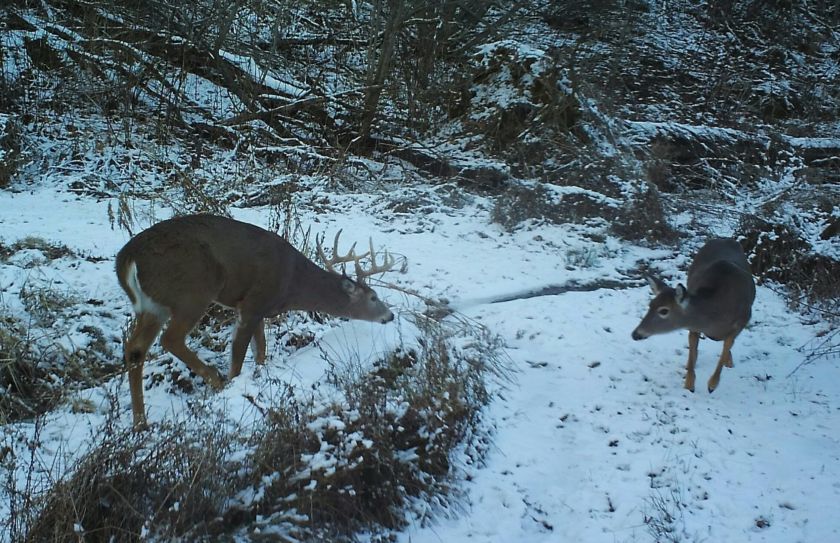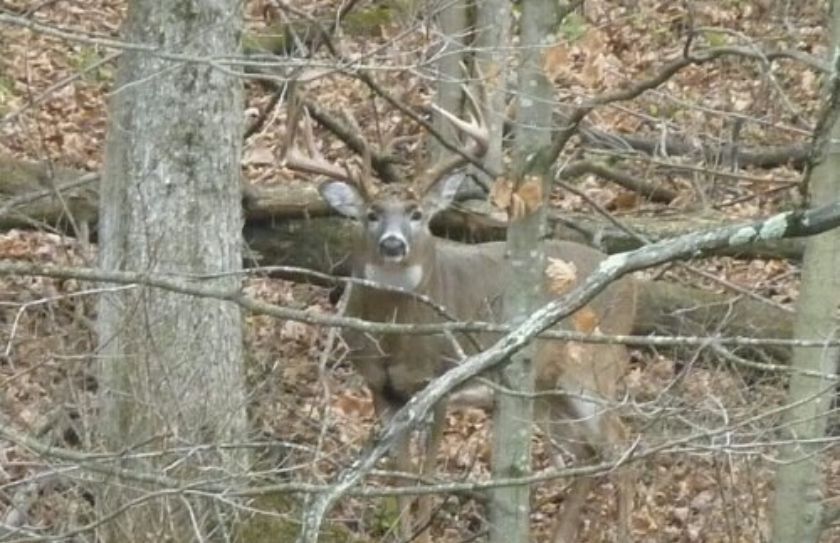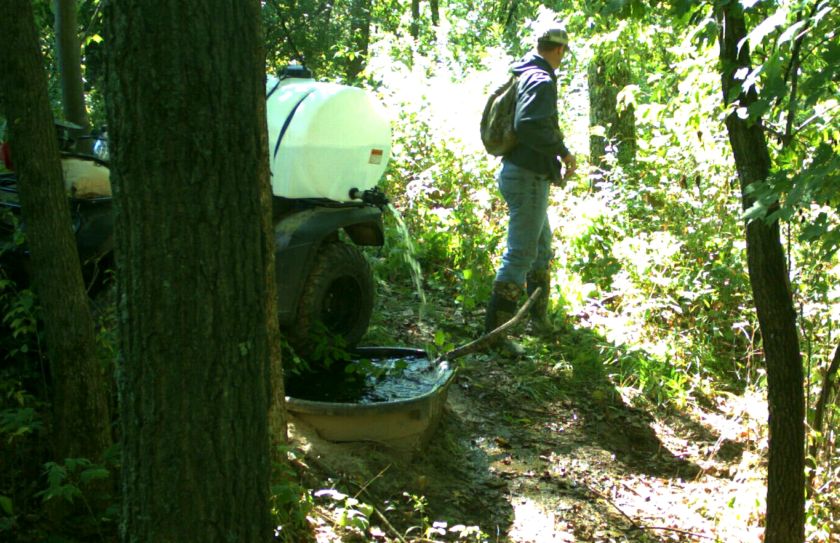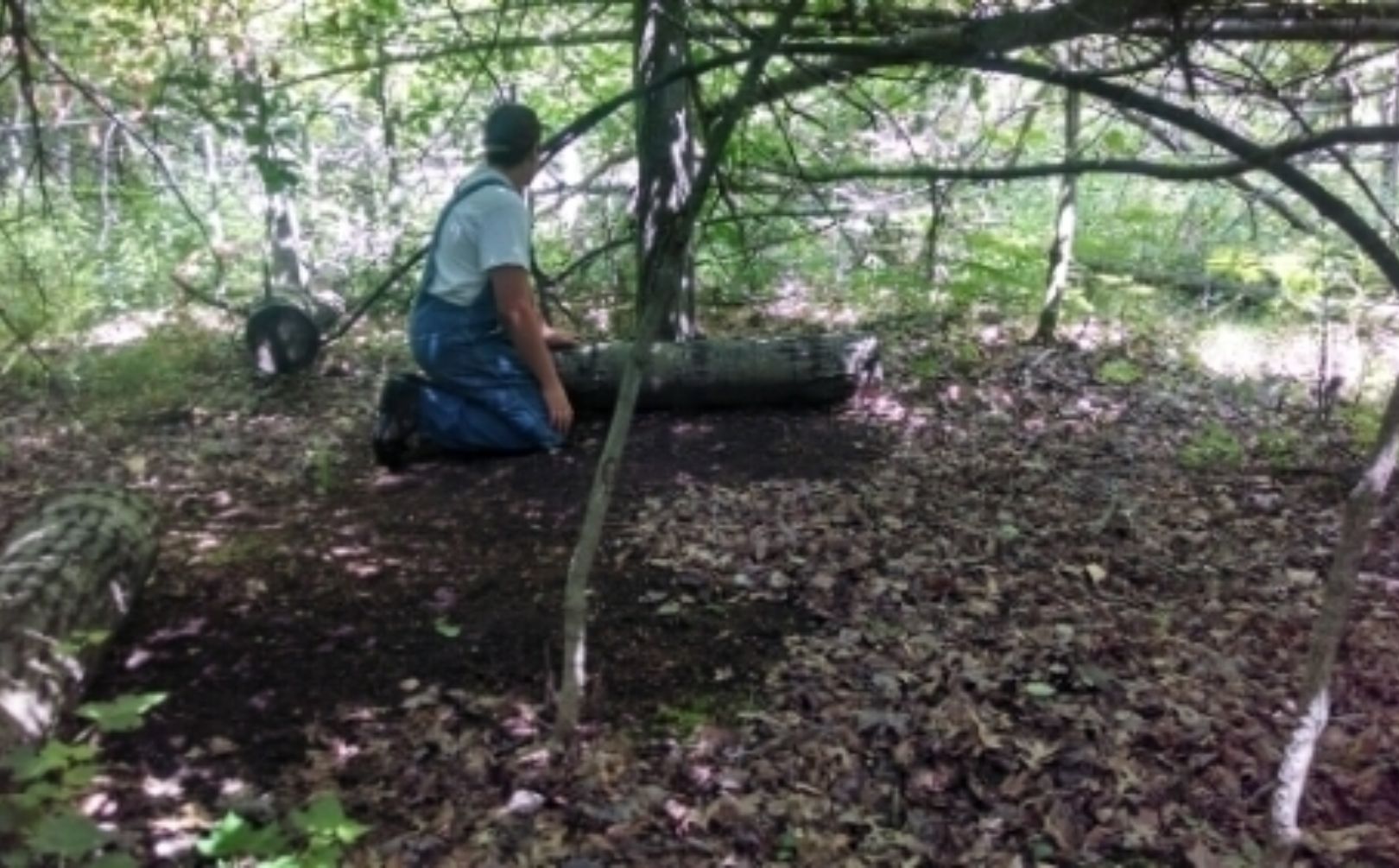
Are you guilty of these myths in your whitetail habitat management efforts? In the past, I have been! What I am referring to is the current state of our society that promotes "immediate gratification". As a whole we tend to want it now, regardless of what it is. "Patience"....what's that? For me personally, I have endured a patience-testing quest of deer pursuits that has spanned the last 4 hunting seasons while hunting public land in OH. Have I harvested one of those hardwood cruising giants? No. Was I hoping to find one the very first year? Yes! However, after roughly 22 days of hunting and a weekend of scouting (seems like every hunting trip is a scouting trip too!) scattered throughout the last few years, my own desire for immediate gratification has officially been squashed. At the same time how sweet it will be, when it all comes together someday and I can finally take to a knee to give thanks for both the hunt and harvest. How patiently realistic are you in your whitetail habitat management and hunting pursuits?
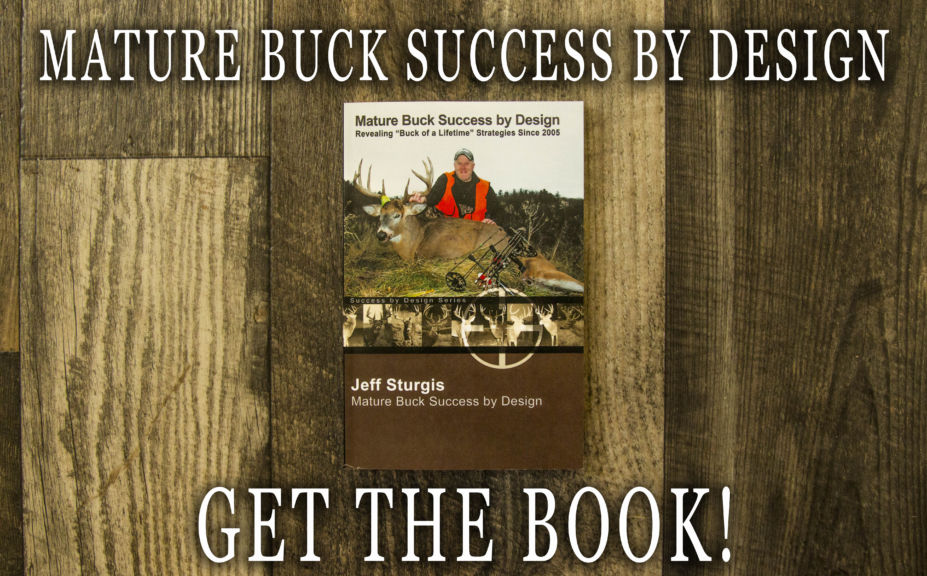
If you enjoy advanced whitetail strategies, then you'll love my Whitetails By Design Book Series, which includesMature Bucks by Design!
As I tour the country scouting whitetail parcels, with scheduled 2015 visits in Maryland and Arkansas to add to the other 17 states I have worked in during my career, I am consistently amazed at what I am blessed to experience in the whitetail woods. My absolute favorite scouting discoveries occur when my clients and I locate naturally occuring Mature Buck Bedding areas and travel corridors. Because of the almost intimate nature of locating a monster's hangout, an incredible level of importance is justifiably placed on the habitat features that combine to create those sacred hone-holes. Unfortunately though, due to the immediacy of our expectations in many whitetail habitat management creations, (including buck bedding areas) several whitetail habitat management myths have been created in the hopes of providing results that are in the end, unrealistic. Those whitetail habitat management myths also extend to include the location of various improvements as well! It probably wouldn't surprise you that some of the most ineffective improvements have taken place by just simply placing too high of a priority on the wrong type of creation in the wrong location. A steady approach that measures the balance needed for the habitat and herd needs on your land may not give you results you desire in an extremely short period of time, but an accurately patient approach will produce results ASAP!
Here are my "Top 10 Whitetail Habitat Management Myths".
I am excited to discuss these common misconceptions with you, in the hope of helping you to accurately navigate the process of experiencing high quality results in the shortest possible amount of time.
10. The Bedding Log
I've actually had clients who thought that a deer needed to lean up against a tree or log like a human would use a backrest on a couch. Deer definitely relate to side struture within their bedding area, but they definetly do not need a back, or side-rest. Some other naturally occuring side structure consists of blowdown tops, stumps, elevation changes, hardwood regen and grass lines.
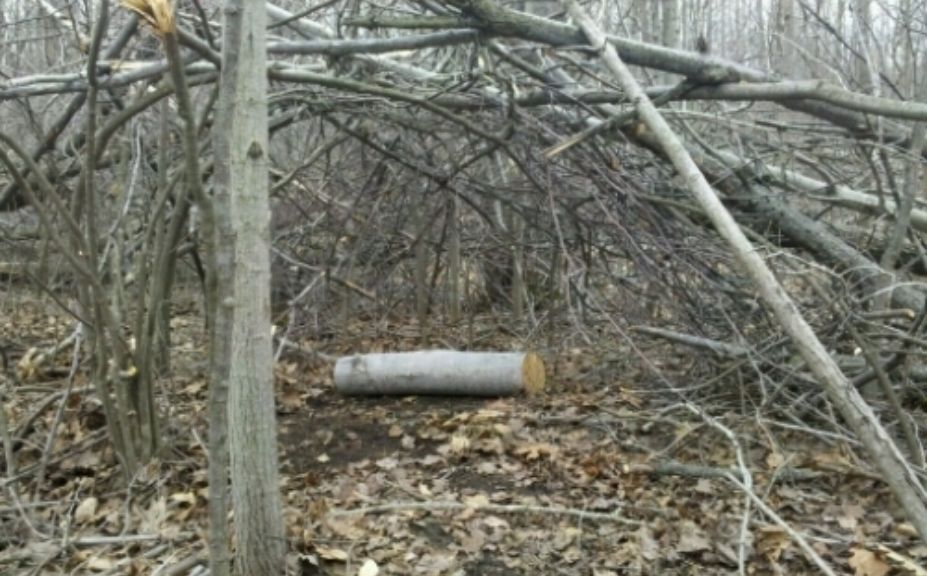
One of the problems with man-made bedding areas is that many times the best of potential side cover is used to create a bedding canopy over the actual deer bed itself. When that happens, adding a log may end up being the only form of side-structure that a bedding deer can relate to. Deer have to relate to some type of side cover when bedding. In an open hardwood setting with zero side cover growth, the only side cover available may be the side of a ridge adjacent to the banch or flat portion of the land that a deer is bedding within. I have experienced dozens of man-made deer beds that lacked any significant source of side cover. When that happens adding a log may be the only attraction to the bed itself, as long as it is already located on a firm, flat and dry bedding platform. Needing a log to attract a deer to bed is evidence of an even greater problem-a lack of side cover. By focusing on the actual side cover of the bed instead of a log (or canopy) you will find success often.
9. First Frost Brassica Use
"The deer will not touch brassica until the first". That sounded pretty cool about 15 years ago when there was very little collective experience for a wide range of brassica plantings across the whitetail range. But by now, the truth has been revealed about the forage timing for brassicas for use as plantings within an effective whitetail habitat management plan.
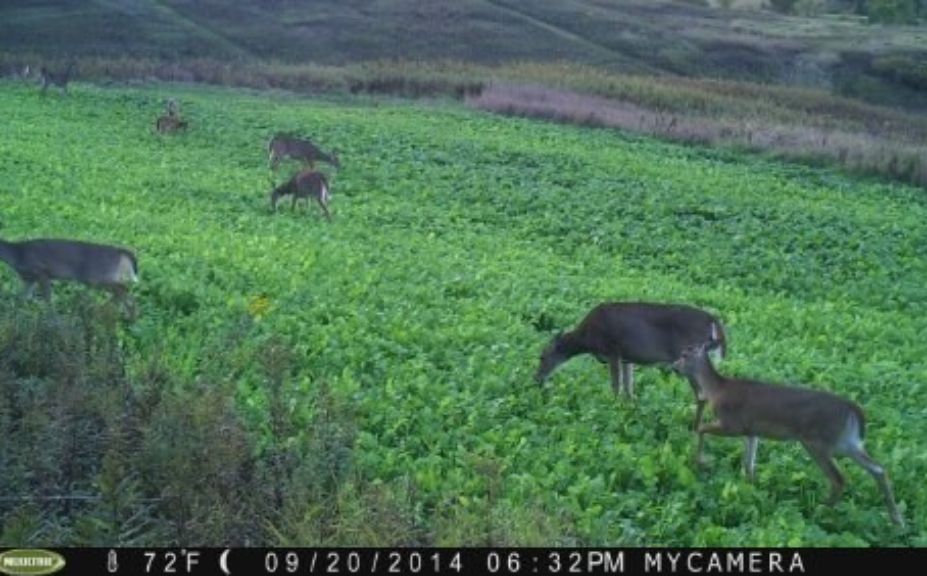
There are a multitude of variables that effect the balance of brassica forage timing as discussed in this article here, titled "Brassica Food Plot Forage Profile". Length of growing seasons, overall deer numbers, % of cover vs ag land and the availability of other forages to establish food plot patterns of use are just some of the variables that determine when and if deer will dine on brassicas. The first frost date? Well, that's just an extremely loose and general guideline that sometimes (but not often) hits the average of a period of brassica use between early August until late March.
8. Year Round Nutrition is Key
Sure, it is critical that deer need to eat quality forages all year long, but is that realistic on your parcel totalling 1000 acres or less? Probably not. Although my experience is limited to the North 1/2 of the states, the months of May-September are by far the most abundant days of food in the whitetail woods! This is probably not true in a portion of the Southern 1/2 of the Country where arid conditions create a decrease in forages, but it's really hard to compete with the overall level of diversity found for the Northern growing seasons. But there is another thing that has to be considred while practicing whitetail habitat management: Dead Bucks Don't Grow!
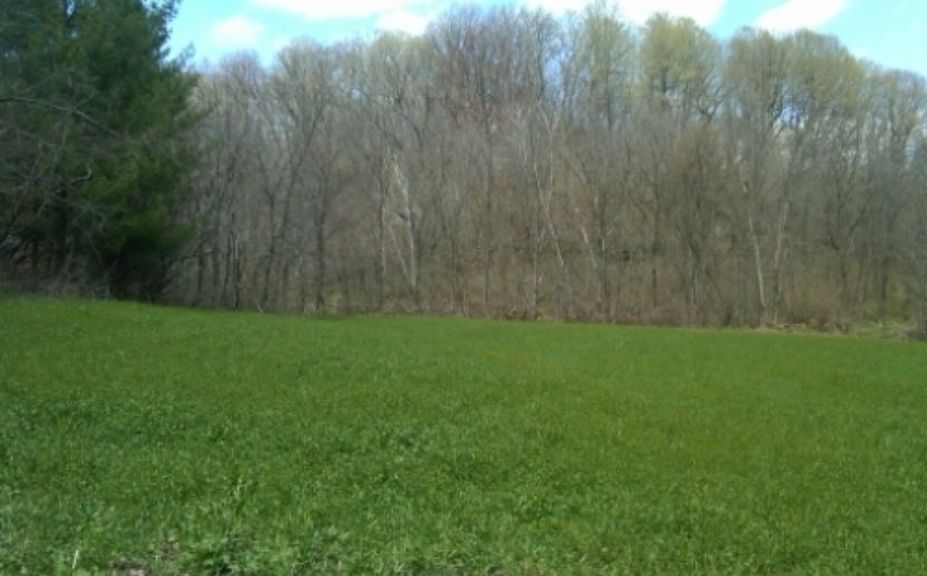
Often, small parcel landowners just don't have enough acreage to offer quality forage options the entire season. "On paper" it sounds great! Lets do our best to give back to the whitetail herd and offer year-round quality food sources...right? The problem arises however, when you begin to enter the most critical times of the year to protect young bucks in the promotion of a healthy and biologically balanced herd. If you offer food in June, at the expense of the most food possible during the middle of the hunting season, expect to significantly decrease your ability to attract, hold and protect deer (in particular bucks) from the neighborhood. In theory (and it's highly debatable) if you could offer a few more pounds of growth to a whitetail by outcompeting the high quality forages provided during the growing season you would have increased the health of that deer overall, right? Well, what if that young buck was then shot during the hunting season because you lacked the volume of forage needed to attract, hold and protect him? No matter how "healthy" or not, if that young buck is hanging from a pole in November you may have missed the mark by not targeting your resource towards the most critical 3-4 months of the year.
7. Water is Critical to Your Success
Water comes in many shapes and sizes, and that includes quality, green forages as well. At the same time, outside of a few select Southern states, water rarely attracts more deer to your land. This is great news for you because:
1. You don't need to realize the expense of a 1/2 acre pond
2. Water shouldn't necessarily be a consideration for purchasing land
3. You can use water to define where deer travel, specifically in front of your bowstand
Although in most situations water doesn't have the ability to attract deer to your land, water sure has the ability to define deer movement!. Not having a water source on the land you hunt actually gives you the ability to use small tanks or waterholes to collect deer movements between bedding and feeding within bow range. I have several waterhole strategy articles illustrated within the article titled, New Waterhole Stand Locations, but have complete confidence that if the land does not offer an existing water source, one can easily be added. And when a water source is added? It can become one of the hottest bowstands in the neighborhood!
6. Oaks Are Critical for Whitetail Habitat
In some cases, acorn production can be great for a brief period of time in the Fall...but it isn't something that you can build a deer herd with. Oaks and any other hardwood species can be a burden to a whitetail habitat manager because you often end up managing timber instead of mature bucks. I guess it depends on your overall focus, but often the most undesirable timber species (Box elder, soft maple, aspen, birch, spruce and shrubs) combine to create the best deer habitat.
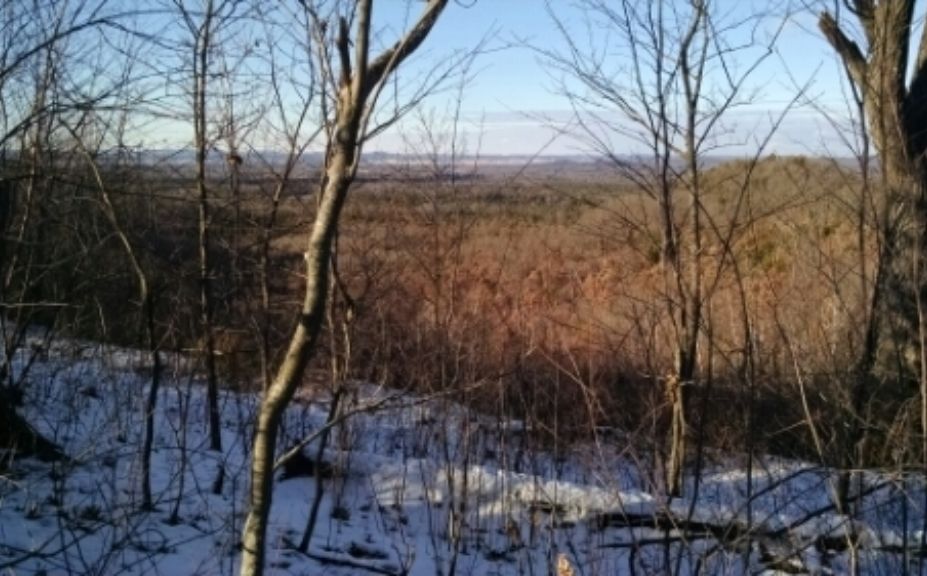
I love mature, mast producing Oaks in combination with heavy understory varieties of shrubs, conifers and natural regeneration. An overgrown pasture featuring a smattering of monster Oaks can creates some of the most attractive habitat in the area. Diversity is key! Although solid stands of Oak, Maple and Cherry may create an endless rotation of timber production and the resulting stream of income, they are by far some of the poorest deer habitats in the country when the ability of the land to provide both quality food and cover is assessed. I would always trade an upland combination of grasses, weeds, briars, native regen, shrubs and conifers over a mature stand of oaks or other hardwoods when it comes to your ability for the land to attract, hold, grow and produce a quality deer herd. Oaks are an awesome species to have on your land, but in my experience that statement is only true if they are small % of your overall combination of habitat diversity.
5. Does Attract Bucks
Ok before you roll your eyes too much, I have to admit that although this is partly true, it is also partly false too. Having a parcel that is over-run by does can be a hot spot to hunt during the peak of the rut! But, what about the rest of the hunting season? Or in many Midwest states-what about the other 12 weeks of the season? Doe family groups rule the roost, in particular dominant matriarch mature does. Doe family groups take over the best available cover adjacent to the highest quality food sources. Once the available acres of cover are completely consumed and filled by does, there can be little if any leftover for mature bucks of any kind. When your neighbors have the same situation...the buck age structure in the entire neighborhood can be greatly decreased.
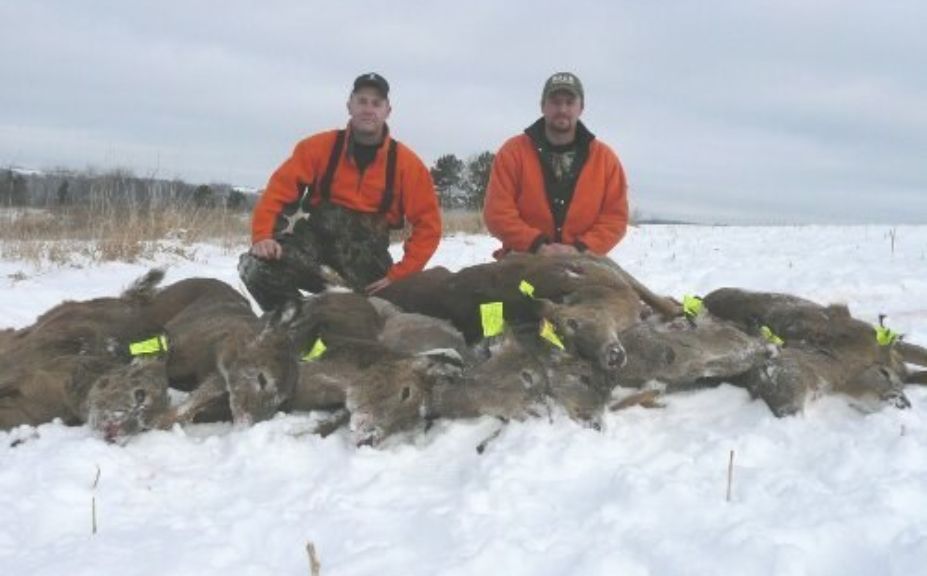
I personally prefer to hunt and manage more balanced populations that contain stable numbers of both does, and bucks. Another way to look at this is this: Although a high doe population parcel may attract a lot of attention during 10 days to 2 weeks of the peak rut, a balanced parcel may contain mature buck activity for 12-13 weeks of the season. Which parcel would you rather hunt and manage? A parcel that features a load of does for 13-14 weeks with the chance of seeing some great buck activity during the rut, or a parcel that features a more moderately populated herd containing some does, but also a consistent buck herd for 12-13 weeks of the season with the exception of the rut. Does take up space and it's up to us to make sure that they don't take up too much or there may not be enough left over for a consistent buck herd.
4. Corn is King
Corn is a great, single-window food source that typically falls just past the critical period for attracting, holding and protecting a Fall deer herd. It can be an important food source during the period of late November through January and beyond, in particular if temperatures are extremely cold. However, this is also the portion of time that brassicas provide forage for as well as small cereal grains that stand tall and green during warm-ups. Brassicas can also be consumed on many parcels to a high degree during October, and small cereal grains during August, September and October. So the window of potential utilization by other forages can be much greater! Corn can be great during it's peak of usage...but it really is a "one hit wonder" during a limited amount of time. On lands with enough acreage to spare, corn can be an outstanding compliment to an otherwise diverse food plot program, but if you rely on corn for your only food source you may have a lot holes to fill!
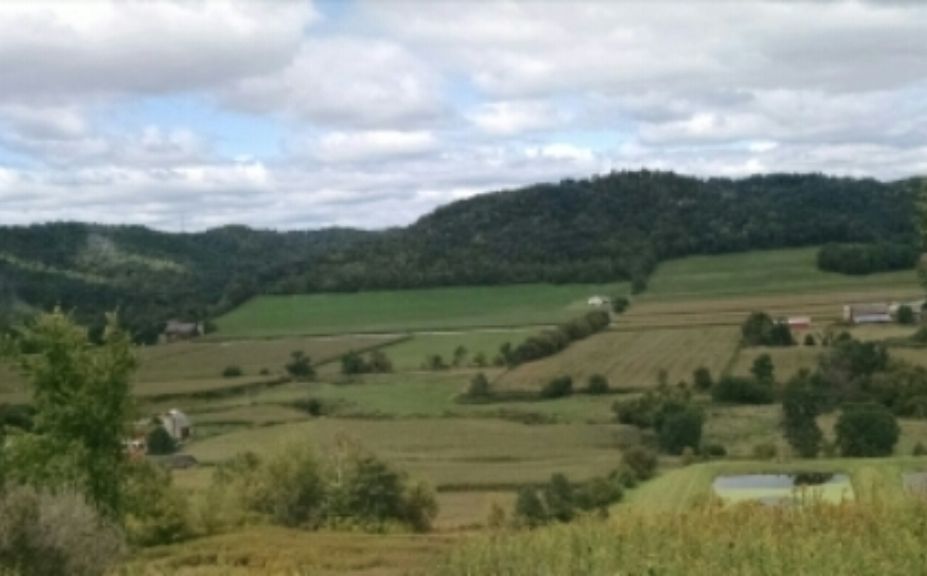
Corn can also equal cover. Each and every deer season you hear a very familiar statement: "I can't wait for the corn to come off". Why? because as both an adeqaute food source and cover all at the same time, mature bucks often do not have to leave the safety and security of the corn to cruise for does, move into the hunter filled woodlots or feed prior to dark. "Corn is King?" Although it certainly isn't king, it can definitely play an additional role in a food plot program that is already diverse through the combination of plantings including multiple forage types.
3. Switchgrass = Quality Bedding
There is a reason why Switchgrass and other grass plantings can turn into a virtual desert of daytime bedding opportunity. In fact, I have witnessed numerous times in the states of IN, DE, MI, WI, IA and IL where switchgrass plantings actually displaced bedding opportunity that had previously been taking place. But let's hold on...should switchgrass be the only habitat type to pick on? No! There are many mono-culture habitat types that by themselves can offer very limited bedding opportunities. Mono cultures occur when pure stands of habitat take over large portions of a given space and often include: Conifers, various grasses (in particular switchgrass) and hardwoods.
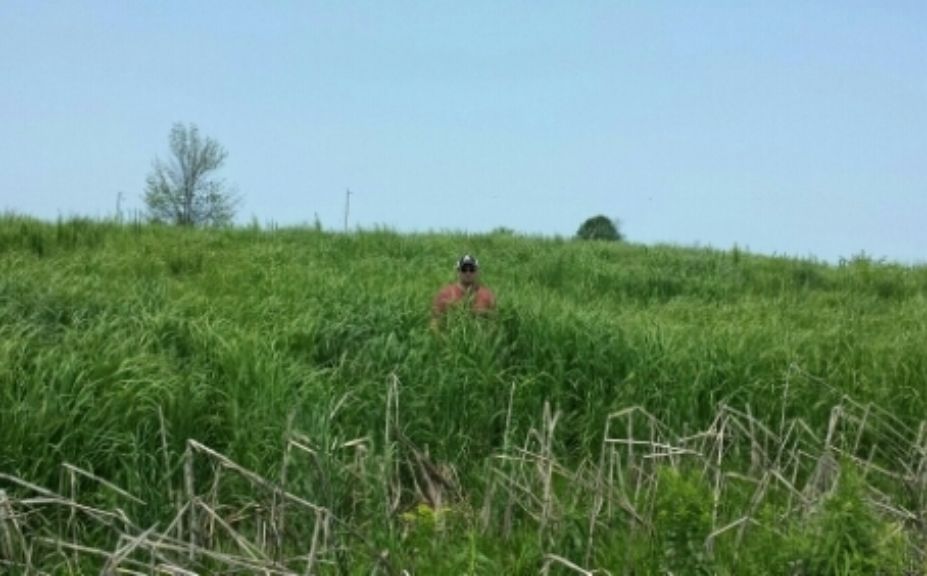
One of the basic founding principles to build a deer herd with is the fact that deer feed 5Xs in a 24 hour period. Deer are rhythmic pattern feeders and this not only effects when they feed, where and why but where they choose to bed during the day as well. Mono culture bedding areas of conifer and especially switchgrass feature nearly a zero food value. A deer needs to feed twice during an average Fall day and although whitetails don't need to dine on the highest quality food source within their daytime bedding area, they at least need an adequate food source. Adequate daytime bedding browse species most often include briars, hardwood regeneration and even leaves during the Summer months. If the deer in your area frequently bed in solid stands of grass or conifer they are often forced to do so due to the lack of cover options, excessive hunting pressure, extreme weather conditions or any combination of the 3. Simply, a whitetail wouldn't choose to bed within a monoculture bedding area unless they have no other option. Do you like to miss a meal? Neither do deer!
Like many other habitat features or food sources, too much of a good thing is a bad thing. However, switchgrass in small quantities and combined with several other bedding habitat components can be outstanding. I have said it many times in the past...and I will continue to say it, but upland style bedding areas consistently attract and hold large deer numbers. When the diversity of grass, conifers, shrubs and hardwood regen is combined in 1 location within an uneven and random pattern of natural early successional growth, you will find some of the best whitetail habitat known to man (or deer). As long as switchgrass (or conifer, hardwood regen, shrubs) is merely a portion of an otherwise diverse offering of daytime bedding cover, it can be a very welcome addition!
2. Deer Bed Canopies
Tie downs, hinge cuts and building a "living bush" for increased bedding opportunity; I've done it all, and taught it all to my clients. But for what? Building a bedding canopy is the least important step in the entire bedding process. A dry and level surface, side cover and multiple escape routes meet the requirements of any natural bedding conditions that can be found in any whitetail habitat across the country. In fact, although you can find outstanding bedding opportunity without a canopy, you can't find quality bedding conditions that do not include adequate side cover and both dry and level surfaces. At the same time many bedding habitats are not conducive to the confining characteristics of artificially created bedding canopies, including most wilderness and high cover % parcels.
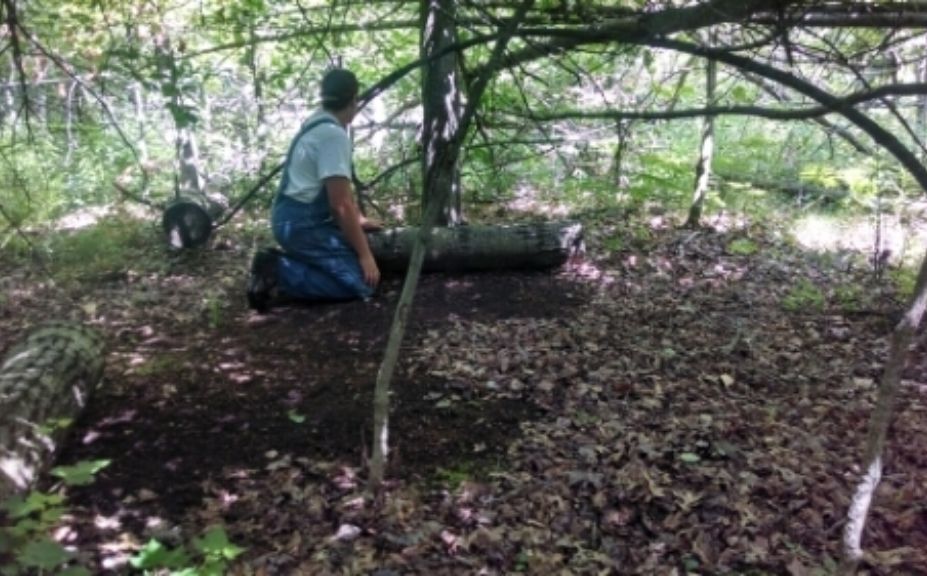
I unravel the Mystery of Building Buck Beds in THIS article, but the bottom line is that when scouting bedding areas for a living, I have experienced that mature buck beds across nearly 20 states do not typically, or naturally include a canopy. Building a canopy can be a lot of fun and improve your deer bedding areas by a few % points but there are a couple of things to consider:
1. In many high cover, low deer population areas a canopy can not only be too confining for deer, but completely avoided. Where does your land fit within the balance of the habitat? Building a canopy can be a lengthy process that results in a complete lack of use. Is the potentail of low reward worth the risk of time spent? If you are like most areas, probably not. If you are in a low cover, high ag and high deer population area-maybe so!
2. If your deer canopy caves-in due to rot, snow or just a simple breakdown of cut timber the entire bedding area can be blocked off and ignored by the local deer herd. I have seen it often. Again, is the potential of low reward, worth the risk?
Important Bonus Myth: Doe and Buck Bed Construction
It's the same bed! Doe family groups and bucks choose their bedding areas based on the proximity to food and stress. In fact, it could be said that a mature buck "takes what's left over". Walk around any ag field that has a current resident population, and adequate/unpressured adjacent bedding cover. It doesn't even have to be the best of cover. However in the snow, you will find that doe family groups will typically be bedding during this time of the year, extremely close to their preferred evening food source. In fact, often doe family groups will bed much closer now than during the hunting season. Why? Hunting pressure. With reduced hunting pressure does will bed very close to their evening destination fields regardless of the size of the bed. Whether it be during the Fall hunting season or Winter months, once the does have aligned their choice of bedding, then bucks and in particular mature bucks can then align their bedding. In my experience mature bucks rarely bed between doe family groups and their evening food source. If the does in your area are pressured well away from their preferred evening food source, it can even boil down to a habitat that actually doesn't even have any room left for mature bucks, even in parcels that have a great amount of "cover". All cover is not created equal in terms of the reflected level of human pressure perceived by the local deer herd.
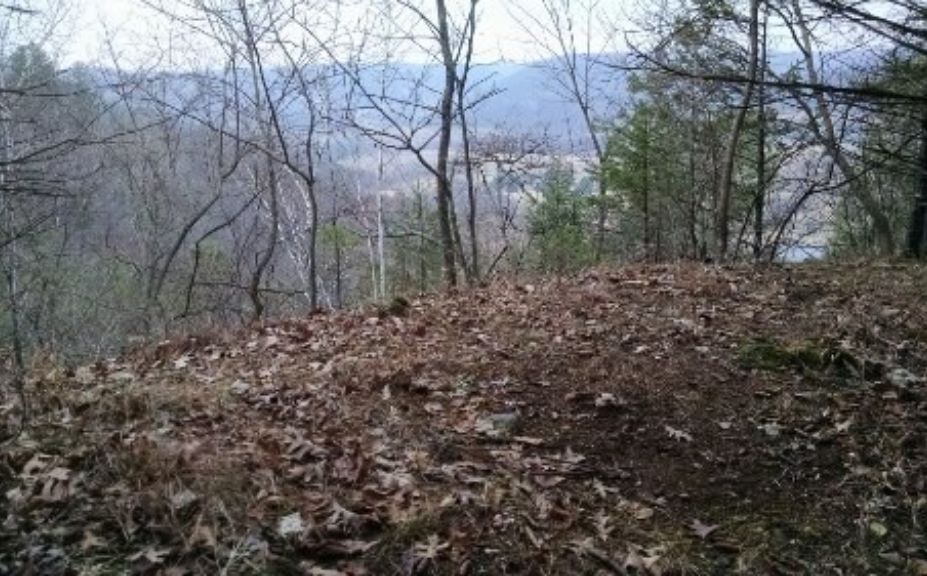
A mature buck bed may have room enough for one...or ten, but that's not the point. The point is that if the bedding area that you are creating has adequate side cover, is level, dry, unpressured and behind the doe family group to evening food source movement (no matter what the compass direction!), then you have a great chance it will be taken over by a buck. If you build a "buck bed" adjacent to a major food source within a typical doe bedding area-a doe family group will take it over. If you build a "doe bed" in a buck bedding area, a buck will take it over. Whitetail habitat management efforts often center around bedding areas which are an important component to a coohesive parcel design, but the more you focus on the "size" or "type" of a deer bed, the greater chance you have to completely miss the mark of establishing a natural structure of whitetail movement.
1. Nocturnal Mature Bucks
Mature bucks often move at dawn, dusk and during the day. Just like the rest of the herd, mature bucks also feed twice during the daylight hours, and more importantly they still gravitate to their preferred evening food source, often reaching those food sources prior to darkness. What changes that movement? We do. We often change it before the hunting season even begins, and we certainly do it while hunting. Have you ever been able to hunt a herd that has been completely left alone until you hit the woods? Experiencing an untouched herd can really hammer home the negative effects of the hunting season opener.
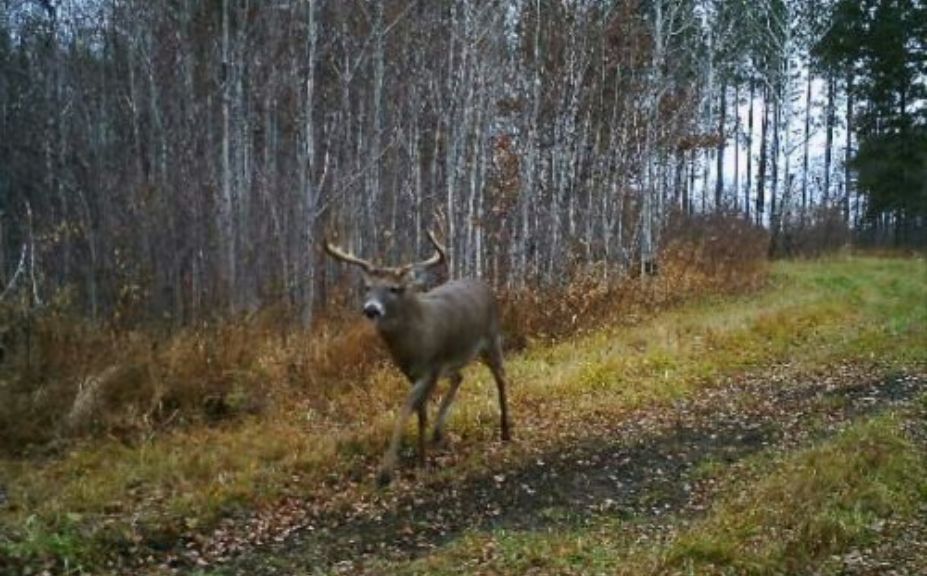
Do you only capture pictures of giants during the middle of the night? That most likely means that those particular bucks have traveled a long ways to reach your camera location. Their pictures will be random, infrequent and not very often. On the otherhand, bucks that are unspooked while living in and around your land will show their faces consistenly and often at your camera locations, near or during daylight. Human pressure is the #1 cause of nocturnal mature buck movements but often those bucks aren't just sitting back until 1:35am and deciding to suddenly move, but instead have just relocated to another habitat that features a lower level of hunter related stress.
Although human pressure is the greatest cause of nocturnal mature buck movements, there is still another reason that deer begin showing up under the cover of darkness: The Seasonal Shift of Deer Habitat Use. Mature bucks need a completely different set of habitat types from Summer to Fall, and it's often impossible to find both types of habitat in the same location. A buck often moves 3/4s of a mile or more away during late September through late October in favor of the higher stem counts of upland cover, areas of native regen and other diverse habitat honey holes that relate to Fall and Winter food sources.
Mature bucks are rarely nocturnal and if they are, it pays to search for answers so that you can make adjustments to both the amount of human pressure placed on the habitat, and even the habitat itself if needed.
Conclusion
"Once a spike, always a spike"! I think we are way beyond those early myths of habitat or hunting management. But in our haste to cash-in on immediate results, our whitetail habitat management efforts have been grasping at many other myths, for far too many years. Success is there for the taking for those of you who are patient and can accurately assess the balance needed for the land and herd in their area. Whitetail success is also available for those of you who can seperate myth from fact, which may just be the most critical aspect of whitetail habitat management efforts that you can attempt to master!
